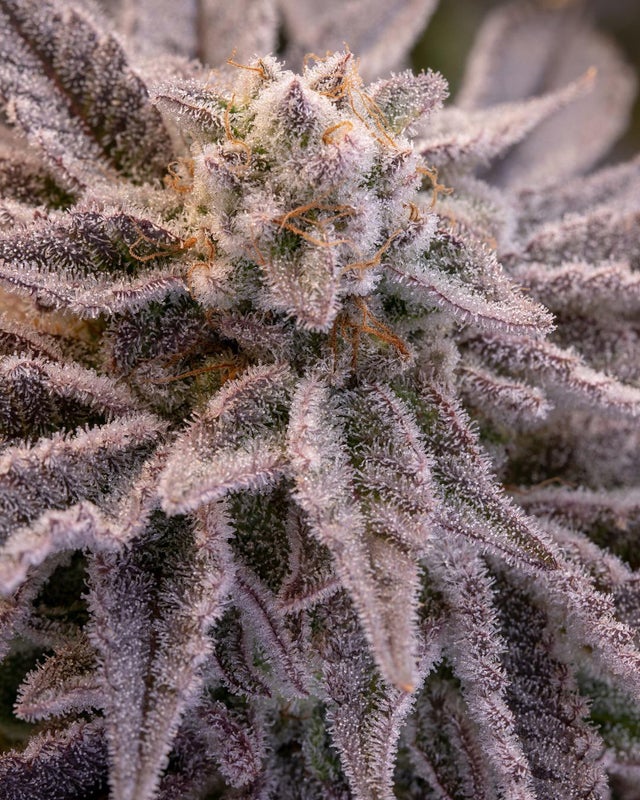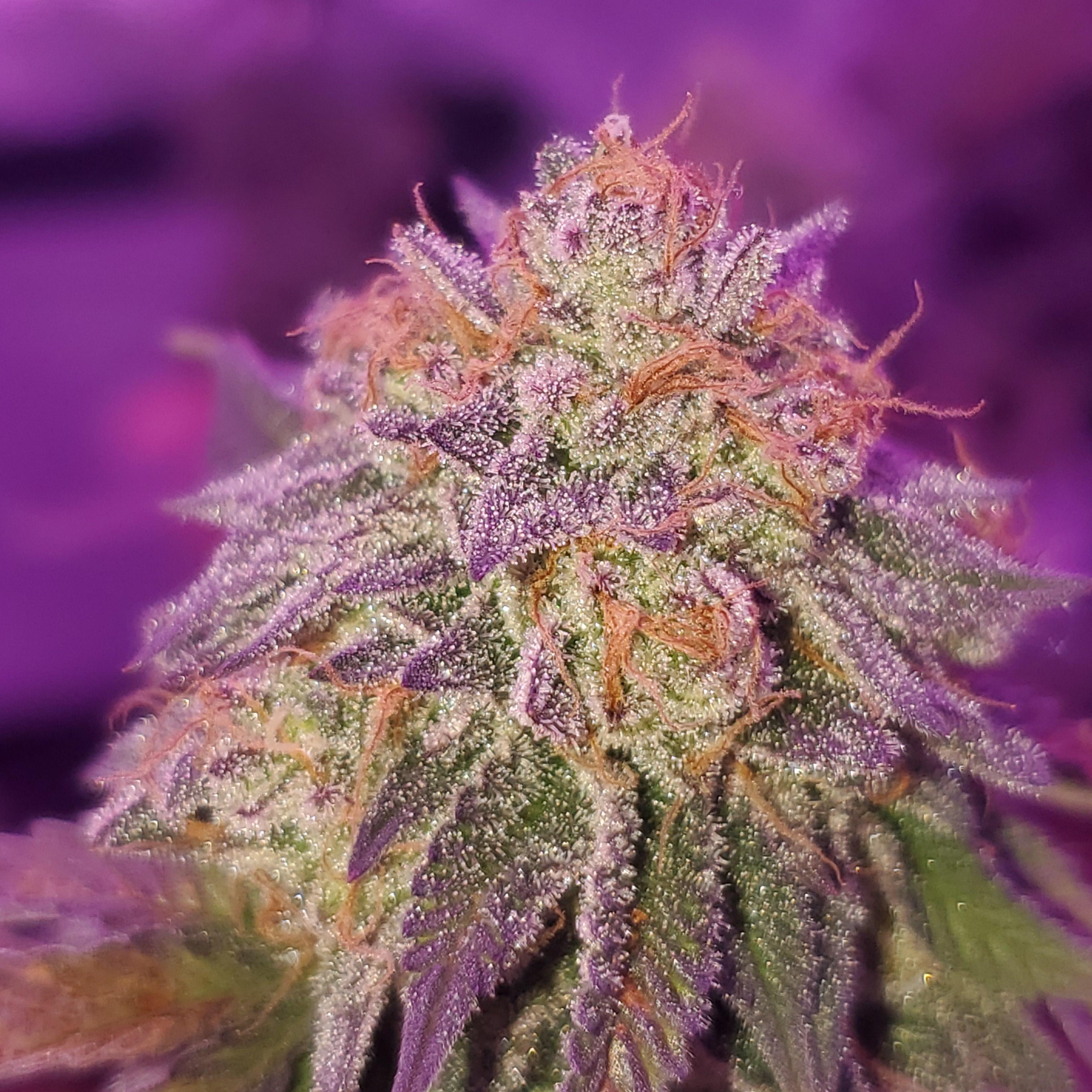Growing Organic Cannabis: Part 6

( Photo Credit: u/nugbros, Mac Stomper)
Macro Nutrients
(Quick recap of macro nutrients, before we get into Calcium)
Macro nutrients are going to make up the bulk of what your plants will consume, and this is going to be the main focus of your efforts to keep your Cannabis well fed as a grower.
A common misconception about the Macro Nutrients is they are N-P-K. They are not.
The macro nutrients are actually N-P-K-Ca-S-Mg:
- Nitrogen (N)
- Phosphorus (P)
- Potassium (K)
- Calcium (Ca)
- Sulfur (S)
- Magnesium (Mg)
In his excellent book "Teaming with Nutrients" Jeff Lowenfels wheels out an important artifact from agricultural history:
Justus Von Liebig, considered by most as the father of modern agricultural science, again contributed to the field in 1863 when he proposed the Law of the Minimum.
It states, “A manure containing several ingredients acts in this wise: The effect of all of them in the soil accommodates itself to that one among them which, in comparison to the wants of the plant, is present in the smallest quantity.”
In other words, plant growth is limited by the least abundant mineral, no matter how abundant the other minerals happen to be.

( Photo Credit: u/gabitheblonde, Mystery Girl, day 67 of flower )
Calcium (C)
Calcium is needed at all phases of plant development, calcium plays a crucial role in several critical plant processes. Calcium is used to make up the cellular membrane wall that holds plant cells together. Calcium is also necessary for the absorption of other nutrients -- which if you have a shortage of calcium can result in what appears to be deficiencies in other nutrients.
Calcium helps to buffer plants against heat and abrupt temperature changes, much like Potassium helps buffer plants against cold temperatures.
Calcium also plays a role in healthy enzyme and hormone production within cells, and helps boost a plants resistance to pests and disease. Calcium is also important for healthy genetic reproduction of cells.
Calcium is important for new growth, and calcium deficiencies may cause plant growth to halt, with the newest leaves being twisted and curled. The absence of adequate calcium can also cause "nutrient lockout" of other nutrients as well. So often times a calcium deficiency is accompanied by symptoms of other deficiencies. Calcium-magnesium "cal-mag" deficiencies commonly appear together.
Calcium has some specific properties that are worth mentioning: be careful about adding too much Calcium to your soil, as the Calcium has an effect on soil pH. Calcium will raise the pH of your soil and buffer it, meaning that it will keep the soil from having sudden/severe drops in soil pH (remember cannabis prefers very slightly acidic soils in the range from 6.2-6.8 pH). But conversely, if there is too much Calcium it could raise the ambient soil pH above 7 (alkaline) and make it difficult to bring that back down to the ideal range of very slightly acidic because of this pH buffering c because of this pH buffering property.
When growing in soil, or a soil-like medium, it is helpful to remember that Calcium is not the speediest of nutrients. Most organic sources of Calcium take time to break down in the soil and become bio available to the plant. This means its important to compost calcium into the soil, or else you could end up with a nutrient deficiency because the soil microorganisms can't break down the calcium source fast encalcium source fast enough to provide your plants with their needs.
Sources of Calcium
Good sources of calcium include:
- Crushed oyster shell
- Ground oyster shell (aka oyster flour)
- Lime (the mineral, not the fruit) (the mineral, not the fruit)
- Dolomite Lime
- Gypsum
- Gypsum
Crushed Oyster Shell
As its name implies, it looks like oyster shells that have been put into a bag and hit with a mallet repeatedly. Crushed Oyster Shell provides a good steady source of Calcium, but it is slow to break down (unless of course you have cultivated a nice soil biome, in which case the beneficial microorganisms will chew through crushed oyster shell in the soil within a few months). It provides a good source of calcium, but it also provides little sheltered pockets when mixed into soil for beneficial soil microorganisms to colonize.
Ground Oyster Shell
This is finely ground oyster shell, into a coarse sand like texture. This calcium will be easier and quicker for soil microorganisms to break down. I would rate this as a "medium speed" release calcium nutrient.
Lime
Lime is a naturally occurring mineral that is an excellent source of calcium. In its raw mineral form it is a slow release mineral, requiring months of work for the soil microorganisms to break it down and make it bio available. Most commercial Lime is sold in "prilled" or pelletized format which will greatly speed up soil absorption. Do be careful when adding Lime to your soil though, Calcium acts as a natural "pH UP" mineral and will raise the pH towards alkalinity (which will cut off some critical nutrients via "nutrient lockout"). So don't go heavy handed with the Lime or else you could be battling high pH soil medium for the rest of your grow.
Dolomite Lime
Dolomite Lime is another mineral that contains Calcium and Magnesium. It is often sold in a prilled format too for easy soil absorption. Don't go too heavy with this stuff or just like Lime, your soil pH may raise above the ideal range and you might have to fight with soil alkalinity for the rest of your grow. Additionally this material contains Magnesium, don't forget that and overdose on Magnesium (too much Mg can make your nugs smoke be harsh/hot, as excess magnesium is stored in the flowers -- and when you ignite magnesium, it burns hot).
Gypsum
Gypsum is Calcium Sulfate (CaSO4) and is a wonderful soil additive. It provides both a source of calcium and sulfur (the only form of sulfur that plants can actively uptake).
Conclusion
Conclusion
My personal preference is leaning towards using just crushed/ground oyster shell for slow/medium release speeds, with light-touch top-dressings of gypsum. Both Lime and Dolomite Lime need to be composted into the soil because they are too concentrated, whereas crushed/ground oyster shells can safely be added and aren't going to irritate the soil microorganisms.
In part 7 we'll explore the macro nutrient Sulfur!
If you liked this article, hit that upvote button, subscribe to my feed, and if you're feeling chatty, drop me a comment down below.
Till then, happy toking ya bunch of stoners!
Congratulations @howwwwl! You have completed the following achievement on the Hive blockchain and have been rewarded with new badge(s) :
You can view your badges on your board and compare yourself to others in the Ranking
If you no longer want to receive notifications, reply to this comment with the word
STOPCheck out the last post from @hivebuzz:
Amazing!!! look the coluors of that beauty
Thanks for sharing this very useful information